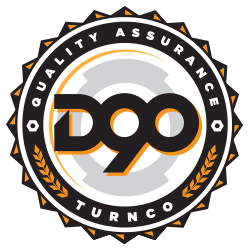Drilling Optimization With Oil And Gas Big Data
Oil and gas big data is now an extremely viable method for drilling optimization. Today, oil and gas companies are tapping the vast amounts of data generated in drilling operations to maximize production – and finding incredible savings in the process.
The results are repeatable, too. Well optimization of flow rates is driving down expenditures. And it all comes back to the power of big data.

It’s not surprising that operators are leveraging oil and gas big data; the extended oil-price slump has forced operators to look for bigger cost savings than updating drillbit designs. We, as an industry, needed a step change in drilling optimization. And today, we’re doing just that – drilling optimization with oil and gas big data.
In this post, we’ll break down the challenges to using big data you’ll need to overcome and the significant drilling optimizations and cost savings you can expect.
How Oil and Gas Big Data Became Actionable
Cloud-based architecture has grown. So rapidly that today’s operators are able to capture and capitalize on great amounts of data generated during production. When other technologies are combined – AI and machine learning tools – operations evolve from the ground, up.
“As more devices connect to the cloud, data generation continues to grow exponentially. This explosion of data—combined with advanced analytics and machine-learning tools—lets companies fundamentally reimagine how and where work gets done.”
– McKinsey & Co, Management Consultancy
But before operators can drill with big data, there are data challenges that must be overcome.

Oil and Gas Big Data Challenges:
- Disparate Data: To be actionable, data must be consistent. But with various vendors, operators receive multiple forms of well site data and time and depth indexes. Data must be accessible and cataloged cohesively.
- Poor Data Quality: When multiple teams work on data sets simultaneously, data quality and accuracy deteriorates. And with new data sources from embedded sensors, maintaining data quality demands a strategy for cataloging big data.
- Data Accessibility: Some operators are generating data, but can’t find, or access, the data when it’s needed. For drilling optimization, big data for wellbore quality and other drilling data must be accessible.
- Unstructured Data: Analytic systems struggle with unstructured text. To make better drilling decisions, operators need quick and easy access to drilling analytics.
You can see a common theme here. Data must not only be generated but regulated.
That’s where a drilling plan comes in. With the right process and workflow, your drill plan brings organization, access, and integrity to your oil and gas big data.
Drilling Optimization with Big Data
If it can be measured, it can be optimized. The tangible benefits of big drilling data include:
- Asset performance management to reduce costs, increase reliability and optimize performance for each piece of equipment.
- Intelligent preventive maintenance with predictive analysis.
- Reduced non-productive time and invisible lost time.
- Real-time analytics for drilling conditions and performance.
- Increased reservoir coverage and production metrics.
- Lift optimization, well completion data, and injection management.
- Pad-planning cycle times reduced to days, rather than weeks or months.
- Incredible savings with the ability to plan multiple wells at once.

These benefits are game-changing. By cross-referencing real-time and historical drilling data, operators are predicting issues and preventing failures.
Now, operators are focused on discovering new ways to share all this great data – not just within their team, but with other service companies and vendors. Because jobs might include 40 suppliers, this data should be accessible by all to fully optimize drilling operations.
And that’s where we come in.
Turnco has combined our innovative BRITE™ system – an industry first – with a quality process to manage drill plans to create something new: the D90 Process.
The D90 process is a cloud-based platform that alights and gives access big data from drilling operators – to anyone on the team.
With all your data accessible by every team member, drilling plans can be consistently improved and workflows are optimized. Here are just some of the ways our clients are using the D90 process.
- Digital safeguards to ensure standard operating procedures are followed
- System-wide improvements for increased production and reduced risk
- Instant access to cradle-to-grave tool data – accessible from any device
- Completely customizable data insights, tailored for your specifications
- Identify unreliable equipment on-site – never pay for damaged tools again
- Reduce NPT and predict tool life with historical data
- Analyze products, assets, regions, and vendors and compare with industry averages

If it can be measured, it can be optimized.
With the D90 process, you gain instant improvements with implementation. Then, big drilling data is used to create greater efficiencies and improved drilling practices.
With D90, operators are limiting inefficient processes and equipment. Then, they’re identifying top performing assets to improve operations globally. The process is repeatable. The results tangible. For example, companies may be operating one drill site at 98% uptime, where another operates at 85%. That difference can be measured in millions of dollars a year.

The Best Part: No up charge – D90 is entirely data and cost neutral.
Want more info on the D90 process? Read our D90 blog to see the platforms full capability.
See the power of D90 for yourself – schedule a D90 demo for a complete walkthrough.



